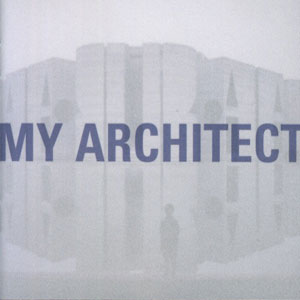My Architect: A Son’s Journey
Music composed by Joseph Vitarelli
Available on Commotion (CR 003)
Running Time: 40:57
Amazon UK Amazon US

My Architect: A Son’s Journey is my first experience of Joseph Vitarelli.. His background has been primarily made-up of various tv features and this critically acclaimed programme was indeed a big step forward, for his career. My Architect is a documentary about genius architect, Louis Kahn, made into a personal and poignant film by his son, Nathaniel Kahn.
Despite the usual budget limitations, the nature and specifically narrow limitations of such a documentary this score represents a departure from the norm for this genre. Joseph Vitarelli uses a small string orchestra combined with organ, piano, harmonica, fiddle, flute and oboe as solo instruments to deliver a very strong emotional work, bringing a most intimate feel to the production in line with its subject. This is very notably evident in the gorgeous string-led Adagio that opens the album, ‘Adagio (opening Titles)’ and there are various other renditions throughout the score, such as “Flying to Salk”, “Dhaka” and “American Hymn” I and II, - both representing the highlights of the whole score. By maintaining the basic elements and melodies and by placing various slight variations in the use of his instrumentation and secondary motifs, Vitarelli creates an attractive series of similar string-driven pieces and breaths a warm air of life into his heart-warming creation; and you, the listener, can’t help but to be affected by their simple, but direct and poetic beauty. Alongside this basic core of the work there is a second main trait: a collection of smooth, plain and eerie piano pieces based on an 8-note motif, strongly echoing Thomas Newman’s American Beauty; enriched with the distinctly recognizable, ‘spacey’ sound of Bowed Glass and an atmospheric veil of gentle electronics. These pieces are of inferior quality, and sadly the interest is diminished compared to the powerful opening. However, things liven up occasionally with, for instance, the twice-repeated charming orchestral waltzes: “Beginnings” and “Travel Waltz”, along with some source music. Notable among these tracks are the old-fashioned and spicy ragtime music of “Arty Stride” by Andy Quinn, Aaron Copland's brilliantly powerful “Fanfare for the Common Man” and the religiously sacred, pompous vocal work of “Call to Prayer”, sung by Mohammad Abu Rayhan.
The problem with My Architect: A Son’s Journey is that it gets significantly lost between musical styles while leaping from the dramatically emotional string adagios, to the eerie piano pieces and the uplifting, groove orchestral waltzes, all the way to interfering source cues. Had Vitarelli only focused on his brilliantly beautiful string adagios and thus creating a more specific and relevant score with a stronger core, this would easily have earned a 5-star rating. Still, My Architect: A Son’s Journey as presented on album, is a fragile, personal and hauntingly beautiful score, food for the souls of the sensitive.
Demetris Christodoulides
3
Michael McLennan adds:-
Joseph Vitarelli gives us a score here that reminds, at times, of Samuel Barber (the more elegiac ‘Adagio’), Thomas Newman (‘The Mystery of Louis Kahn’) and Aaron Copland (‘American Hymn I’). It’s consistently beautiful, and the themes are generally played in full, the documentary form providing more room for complete musical statements to give shape to the film. It seems a bit shallow at times, but at heart it’s sincere (and not all sincere art is bad!), and Vitarelli composes attractive themes. The highlight for me is the folk-infused waltz that dominates the concluding ‘Suite for Louis Kahn’. It’s nostalgic, sun-drenched, and you kind of wish your own life was commemorated with such a sweet piece. Note that this CD contains dialogue excerpts, recordings of architect Louis Kahn’s thoughts on life and art, though their appearance is minimal, and only in one case appears over the music. I find they help the score attain a distinction the sum of its parts doesn’t quite seem to have. Some of the source cues eat away at score’s impact, though others complement it.Michael McLennan
3
Return to Reviews Index